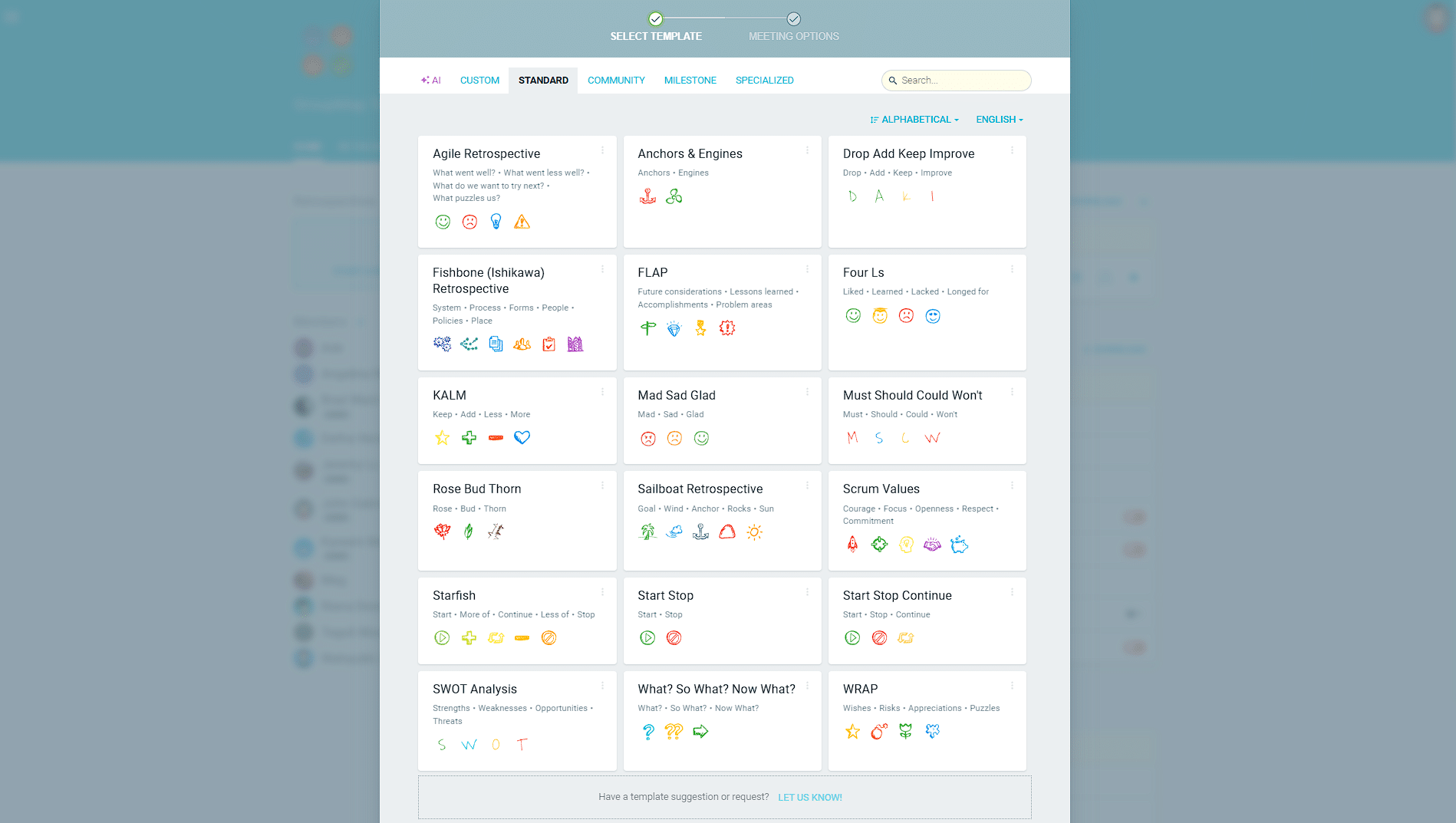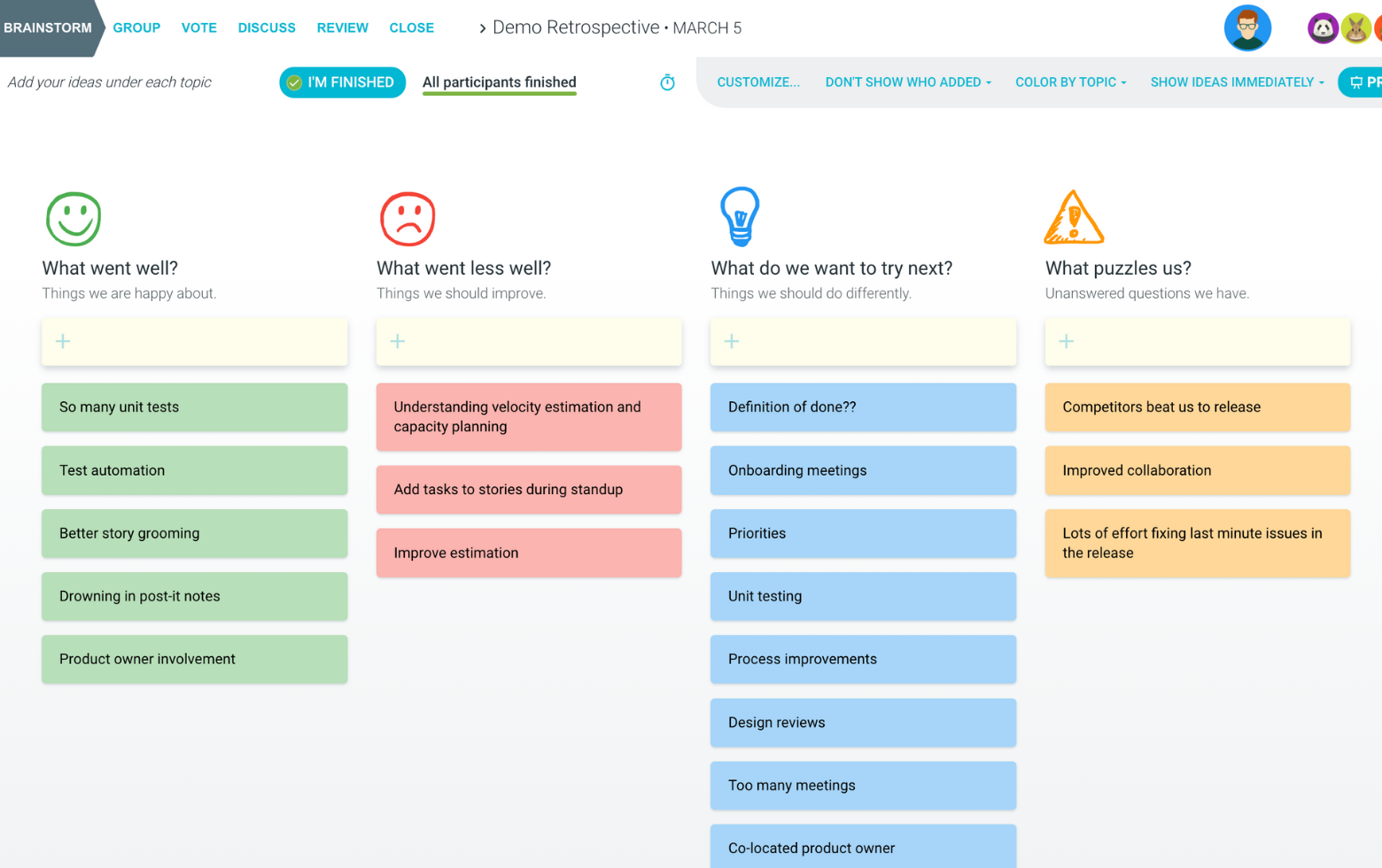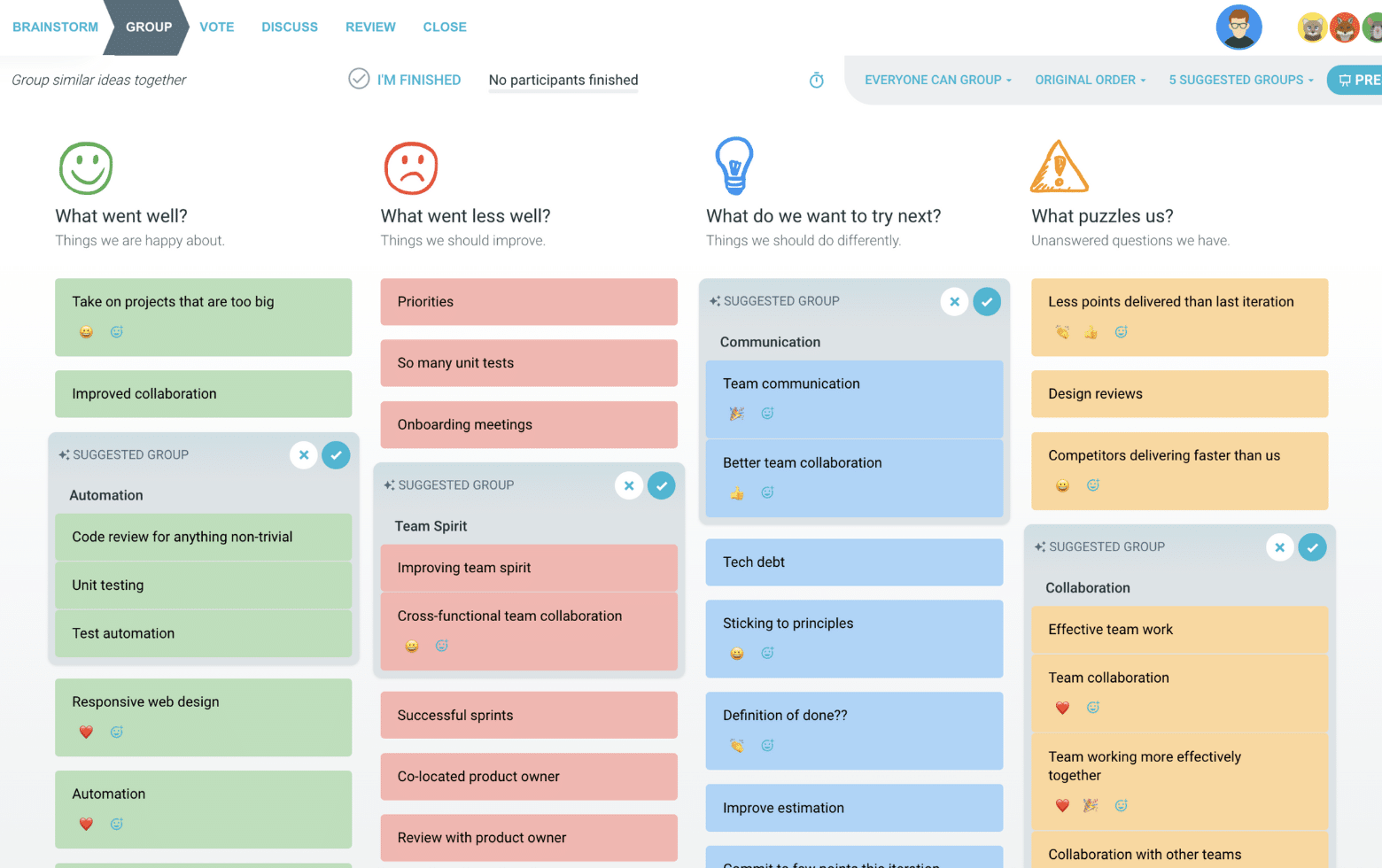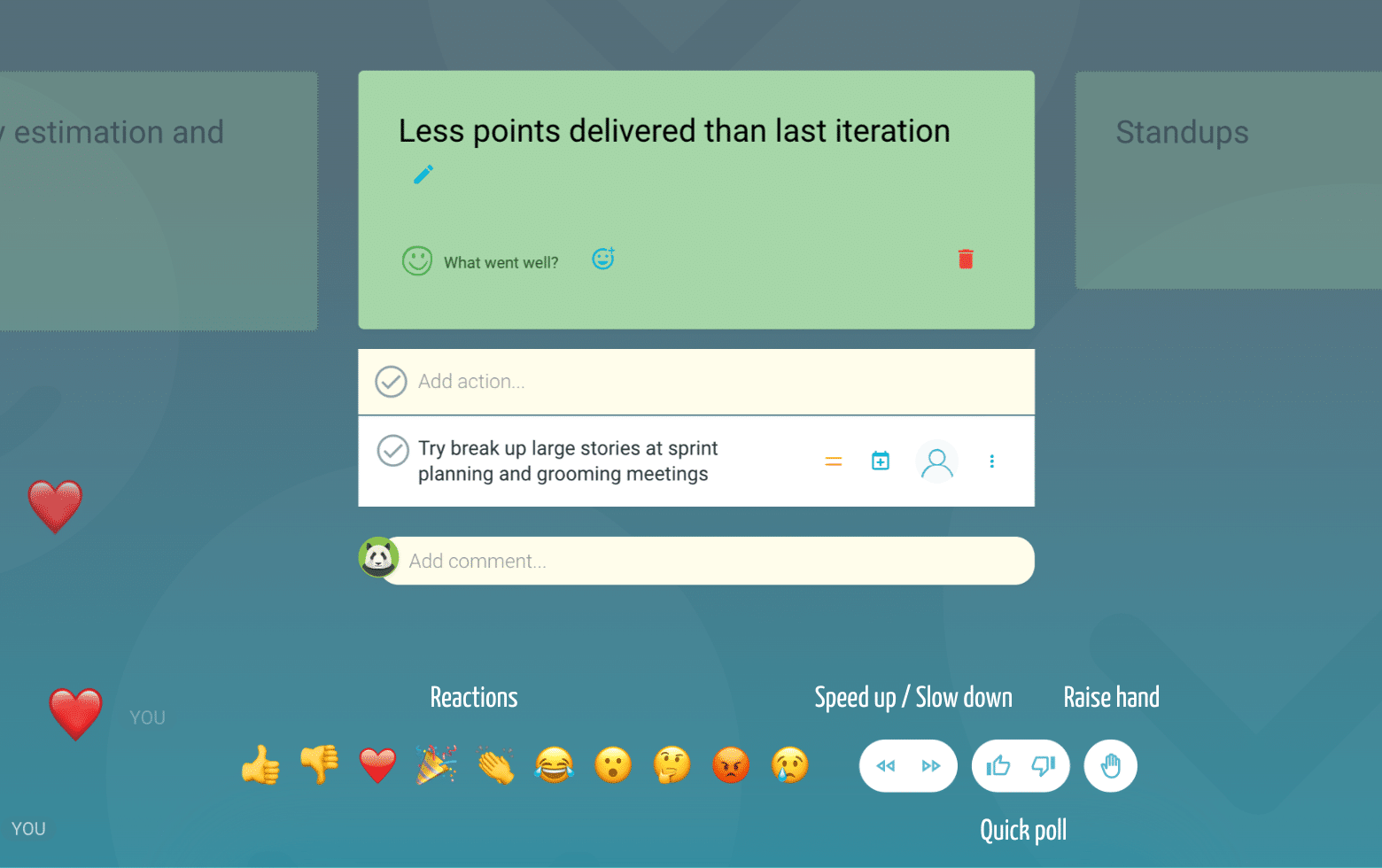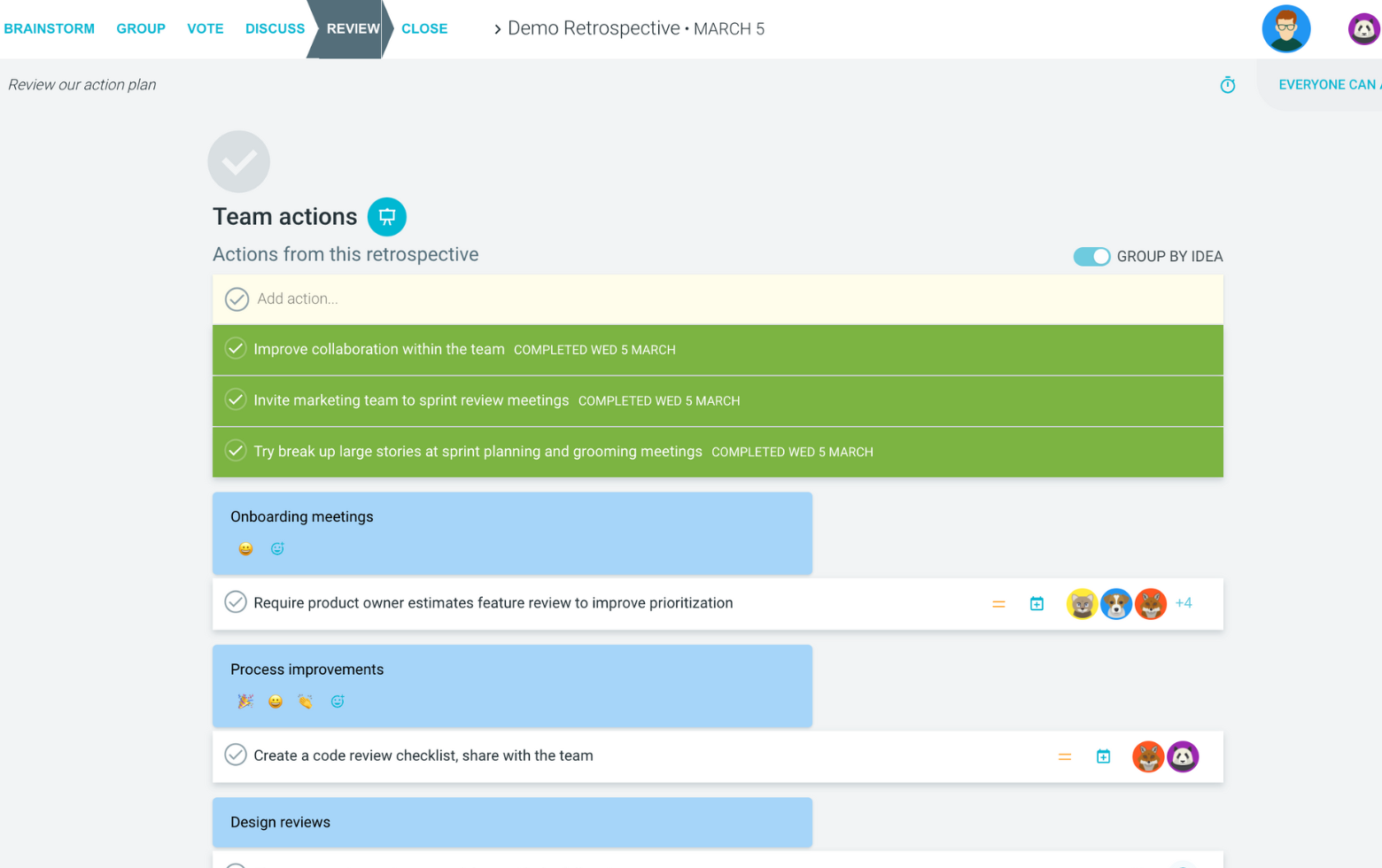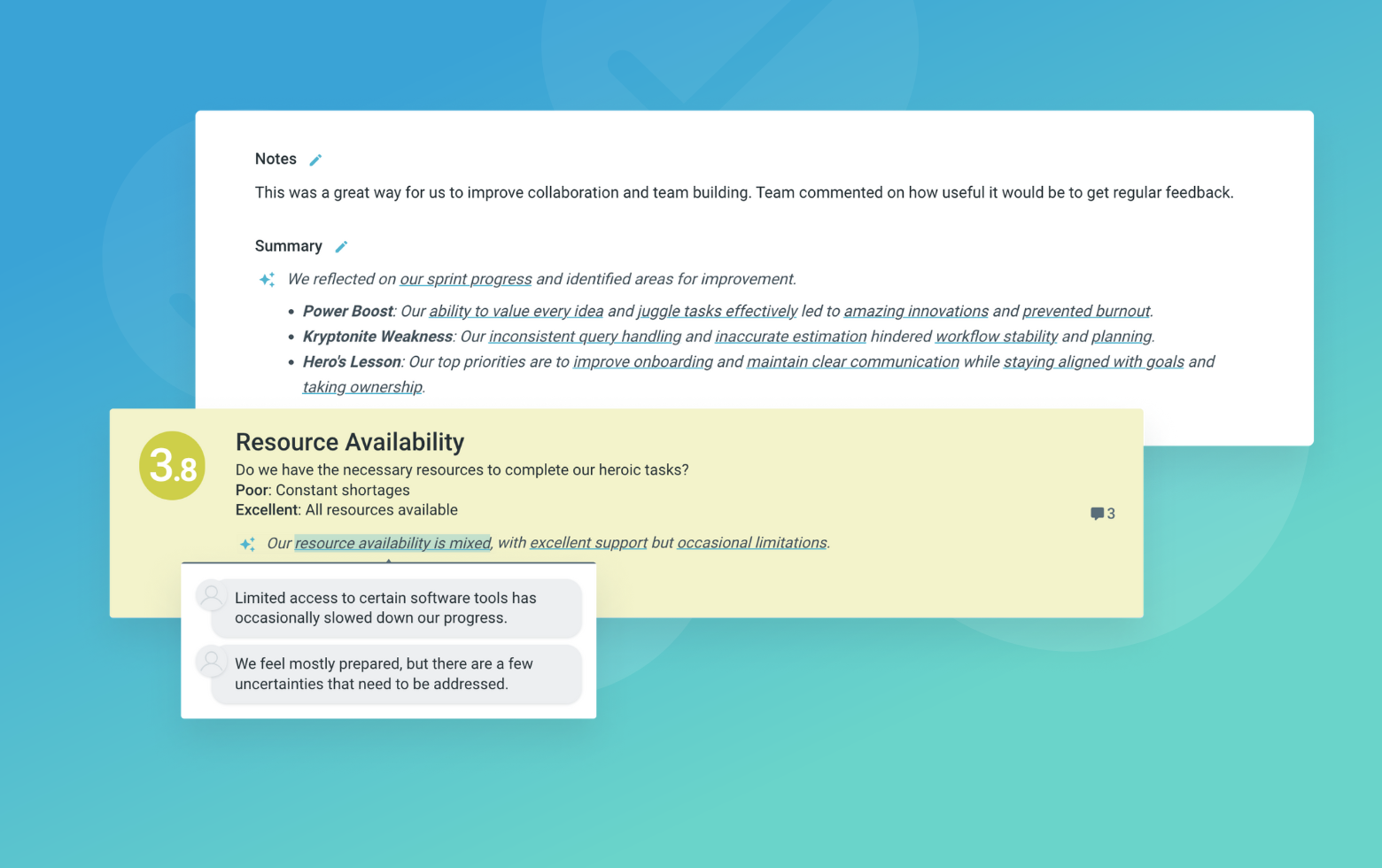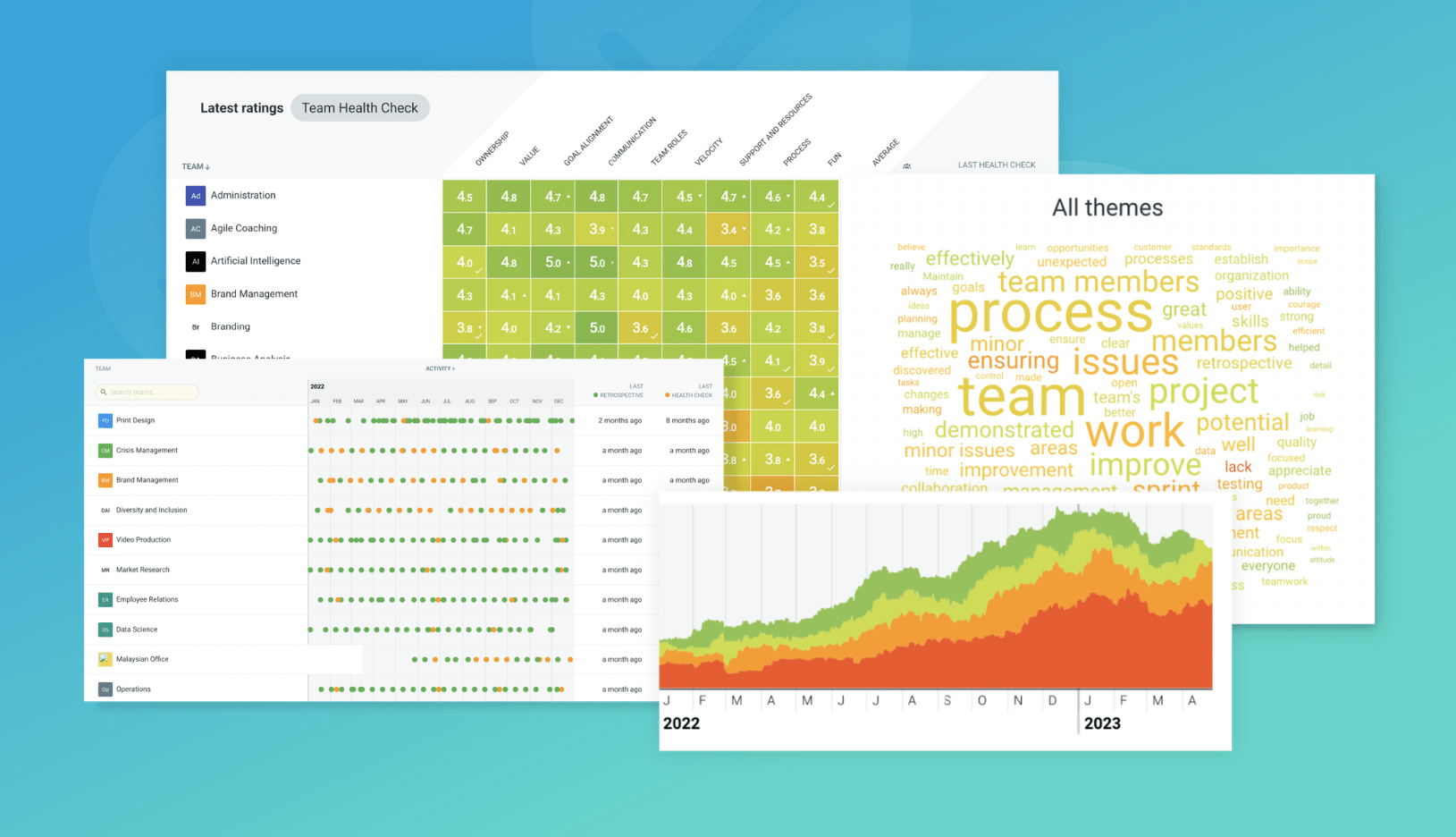The Goldilocks retrospective is a fun, story-based activity that encourages teams to reflect on their processes and identify areas for improvement. Inspired by the classic fairy tale, participants categorize their experiences as 'too hot' (things to stop or take up too much energy and time), 'too cold' (things to start or require more energy and effort), or 'just right' (things to continue).
This light-hearted format creates a safe space for open discussion and helps teams find the 'just right' balance in their approach. By aligning their reflections with a familiar narrative, teams can gain valuable insights and develop actionable steps to optimize their workflow. Importantly, this is a chance for your team to discuss what "just right" means to them and that it is aligned with the organization.
The Goldilocks retrospective is particularly useful for fostering continuous improvement, enhancing team dynamics, and promoting a culture of constructive feedback with the help of a classic fairy tale.
What is The Goldilocks Retrospective
Too Cold
What are the things that we should start doing?
What are the things that need more energy? What processes are stuck or moving too slowly? What processes are slowing us down?
Just Right
What are the things that we should continue doing?
What are the things that we should continue doing? What processes are working well and serving its purpose?
Too Hot
What are the things we should stop doing?
What are the things that we should reduce? What is causing friction or causing fires? What is taking up a lot of energy?
Suggested icebreaker questions
- If you were a character in the Goldilocks story, which one would you be and why?
- What's your favorite fairy tale or childhood story, and why does it resonate with you?
Ideas and tips for your retrospective meeting
- Set a positive and lighthearted tone by embracing the Goldilocks theme with props or visuals.
- Encourage participation from all team members, including quieter individuals.
- Remind participants to focus on processes and practices, not individuals.
- Rotate the Scrum Master. This will change the voices that are heard and give people a chance to contribute to the retrospective in a different way.
- Follow up the retrospective with an action plan to address the identified areas for improvement.
- Use a Return on Time Invested (ROTI) tool to monitor the effectiveness of your meeting.
.
How to run effective meetings with TeamRetro
Start Your Session in a Click
Log into TeamRetro and choose your template. Customise questions and the workflow to create your perfect retro for your team.
Create Your Team Easily – No Separate Accounts Needed
Brainstorm Individually – Free From Bias
Smart Grouping for Faster Insights
Fair, Flexible, and Fast Voting
Engage, React, and Capture Key Insights
Walk your team through ideas one by one with Presentation Mode. Stay in sync, spark real-time discussions, and capture feedback with comments, live reactions, and polls—all in one place.
Turn Ideas Into Action
Propose next steps with team buy-in, get AI-powered action suggestions, and keep everything in one place. Committed actions sync to your personal dashboard and integrate with your workflow tools—keeping you on track.
Save, Share, and Stay on Track
Get quick AI-powered summaries, add facilitator notes, and store retrospectives in your library for easy access. Schedule your next session and track published actions to keep your team accountable at the next retro.
Turn Team Data into Actionable Insights
Uncover trends, common themes, and key engagement metrics at a glance. Track sentiment shifts, analyze conversations, and monitor completed actions to drive continuous improvement.
